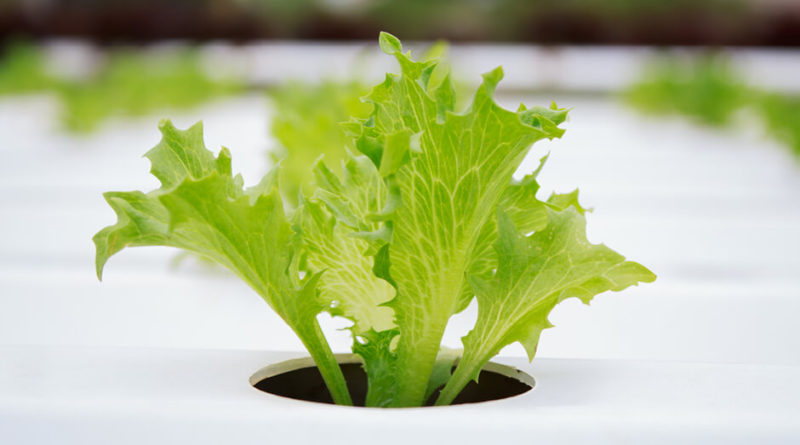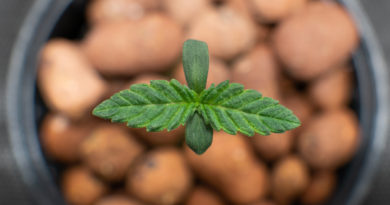Plant Diet Basics and Formulation Fundamentals
The chemistry of hydroponic nutrients and the physiology of mineral uptake by plants can seem complex, particularly to those new to soilless growing. Others may want to know all the ins and outs of crop nutrition and how to best use the essential mineral elements required for growth. Experimenting with various nutrients, boosters and formulations can lead to some interesting findings and is not just for large-scale commercial growers. Hobby gardeners can also benefit from calculated and careful adjustments to their base nutrient formulations, and these days we have access to a wide range of fertilizers, products and information to do just that.
Nutrient solutions are made by dissolving a number of water-soluble fertilizers in water to create concentrated stock solutions. These can be bought as bottled nutrient products or powdered mixes ready for dilution and use in hydroponic systems. The majority of these products are high-quality, carefully calculated and blended for a range of different uses, including formulations for the different stages of plant growth and for different hydroponic systems and grow mediums. Along with these, additional products help growers boost individual elements of their base nutrient formulation. Liquid calcium, bloom boosters with high potassium, magnesium solutions and iron chelates are just some of the products available for growers who want to tinker with their basic nutrient formulations. Read on to learn how to make your own.
The Difference Between Recirculating and Non-recirculating Systems
Non-recirculating systems, where the nutrient solution is applied to the plants and the drainage runs to waste, are much more forgiving when it comes to nutrient imbalances. However, many growers use recirculating systems, in which nutrient imbalances are more likely to occur. As the nutrient solution flows around the system, its composition can change if plant uptake ratios are different than those supplied in the original formulation. Nutrient solutions are designed to supply, in a fairly exact amount, the elements needed by the plant at each stage of growth, in theory keeping things in balance over time. But in reality, plant nutrient uptake varies depending on factors such as the growing environment (light, temperature, humidity, CO2); plant genetics and plant species; stage of plant development; plant health; water supply; EC and pH; and other unknown factors, so keeping that nutrient ratio balance can be a challenge in the long-term.
Email Newsletter
Join thousands of other growers who are already receiving our monthly newsletter.
Water Source and Quality
Growers might need to formulate their own nutrient solutions when their water supply contains minerals. Plant-usable minerals such as calcium and magnesium, and trace elements such as boron, zinc and copper, which are only required in tiny quantities for plant growth, can accumulate if they are in both a nutrient solution and the water supply, eventually causing solution imbalances. Growers should get their water analyzed to determine which minerals are present and at what levels. The base formulation for the crop can be adjusted based on the findings, reducing the need for certain fertilizer inputs. Hydroponic formulation software programs can also help with this.
Ideal Parts per Million (ppm) for Nutrient Solutions
Parts per million (ppm) is the commonly used measurement when comparing different elements in hydroponic nutrient solutions. Ppm is equivalent to milligrams per liter (mg/l). Below are some typical recommendations for the most common hydroponic crops in elemental ppm values.
Here are the most commonly used ppms for various elements in hydroponic nutrient solutions:
There is a wide range in these elemental ppm levels for a number of reasons. EC determines nutrient strength, so a tomato formulation run at an EC of 5 will have much higher ppm values for macronutrients than a lettuce solution run at an EC of 1, due to the concentration factor. Also, fruiting crops will require a considerably higher level of potassium for fruit tissue development than a vegetative-only crop. Some elemental requirements, like the need for iron, change based on environmental factors such as light. A high-light environment will require a nutrient formulation with considerably more iron to meet plant demands under those growing conditions than a crop under short days of low light, for example.
Most commercial nutrient brands will be able to supply the ppm of each of the major and trace elements at certain EC or dilution levels. Using this information, growers can determine if the nutrient product meets their requirements, or calculate the amount of other boosters they may need under certain situations. A common example is using a potassium booster to bring potassium levels up during the heavy-fruiting stage. Fruit tissue contains large amounts of potassium, so this prevents potassium depletion, particularly in recirculating systems.
Read More: Setting the Record Straight – Primary vs. Secondary Plant Nutrients
Changing the ratio of nitrogen-to-potassium between vegetative and fruiting crops is simply an attempt to try and match the different uptake ratios at these different stages of growth. Using a bloom formulation, for example, does not suddenly force vegetative plants to commence flowering, as that is determined by factors such as maturity stage and day length.
The growing medium also plays a role. Completely inert growing substrates such as stonewool or perlite do not affect the composition of the nutrient solution around the roots, but freshly expanded coco coir, depending on pre-treatment and quality, does have a CEC (cation exchange capacity) and often benefits from the use of a coco formulation, at least for the first few weeks of growth. Coco formulations are usually higher in nitrogen to help counter any initial nitrogen draw down, higher in calcium and iron to help with calcium and iron retention in the medium, and lower in potassium, which is a naturally occurring salt in many coco fiber substrates.
Mixing Nutrients from Fertilizer Salts
For growers interested in mixing up their own nutrient formulations from a customized recipe, the process is relatively simple. The nutrient formulation needs to be balanced and suitable for the crop, water supply, environment and system. Growers should ensure all the essential elements are contained in their recipe (N, P, K, Ca, Mg, S, Fe, Mn, Zn, B, Cu, Mo), unless levels are high enough in the water supply to meet plant requirements. Problems can occur when taking formulations from different growing environments.
For example, a low light, mid-winter formulation may not be ideal for a high-light, rapidly growing summer crop. Checking the nitrogen source is also important, as the ammonium form of nitrogen is different from the nitrate form. Low levels of ammonium N (less than 15 per cent of total nitrogen) are generally OK to help boost winter growth of vegetative crops and help control pH rise, but too much ammonium (NH4) competes for calcium uptake and can increase problems such as blossom-end rot and tip burn in certain growing conditions. High levels of ammonium can also cause plant toxicity.
Read More: Preparation of Fertilizer Stock Solutions for Hydroponics
Typically, nutrient formulations are divided into Part A and Part B stock solutions and it is vital these are kept separate in the concentrated state so reactions don’t occur, which makes some elements unavailable for plant uptake. For example, if the calcium from stock solution A mixes with the sulfate in stock solution B, then insoluble calcium sulphate forms and precipitates out.
Let’s have a look at an example of a standard nutrient formulation for a vegetative crop. If we take a hydroponic nutrient formulation for NFT lettuce crops using reverse osmosis (RO) water for winter growth, then the most commonly used fertilizer salts may not be ideal for all situations, systems and crops. Keep in mind that the potassium nitrate is split between the A and B stock solutions to assist with solubility. A dilution of one in 100 will give an EC of 1.6 and TDS of 1,120.
- Stock Solution A (50 liters)
- Calcium nitrate 4,010 g
- Potassium nitrate 800 g
- Iron chelate (10%) 179 g
- Stock Solution B (50 liters)
- Potassium nitrate 800 g
- Monopotassium phosphate 1,090 g
- Magnesium sulphate 2,132 g
- Manganese sulphate 41 g
- Boric acid 19.5 g
- Zinc sulphate 5.5 g
- Copper sulphate 1.5 g
- Sodium molybdate 0.5 g
This formulation would give the following ppm of each element at a 1:100 dilution rate:
- Nitrogen=166 ppm
- Phosphorus=46 ppm
- Potassium=179 ppm
- Magnesium=42 ppm
- Calcium=160 ppm
- Sulphur=55 ppm
- Iron=3.5 ppm
- Manganese=2 ppm
- Zinc=0.25 ppm
- Boron=0.70 ppm
- Copper=0.07 ppm
- Molybdate=0.05 ppm
Mixing a formulation based on a nutrient recipe involves carefully weighing out the fertilizer salts, placing them into the stock solution containers, then adding sufficient water (warm water will speed up the process) up to the volume mark. Because the fertilizer salts take up volume, a 10 gallon (gal) stock solution will not require 10 gal. of water to reach the volume mark. Once mixed and stirred, the salts will start to dissolve and these stock solutions, once covered and in lightproof containers, will keep indefinitely. Since the trace element fertilizers are generally required in very small amounts, many growers making up less than 50 gal. of stock solutions prefer to use grams rather than ounces to ensure this is as accurate as possible.
Assessing Your Formulation
How well a nutrient formulation performs in any given hydroponic system depends on plant nutrient uptake, the suitability and balance of the formulation chosen and the accuracy of weighing the fertilizer salts and subsequent dilution for use. Most commercial growers regularly analyze nutrient solutions with their own equipment or by sending solution samples to an agricultural lab.
This analysis shows levels of each element in ppm, which can be compared to the values provided in the original formulation. Any differences can be adjusted for, so the formulation often changes over time as required. Smaller growers may not be able to justify the use of solution analysis on a regular basis, but keeping track of growth rates, yields, any signs or symptoms of a nutrient deficiency or toxicity, and even comparing plants grown with different nutrient products or formulations can all help optimize plant nutrition.
Read Next: Algae Growth in Your Hydroponic System – Friend or Foe?




